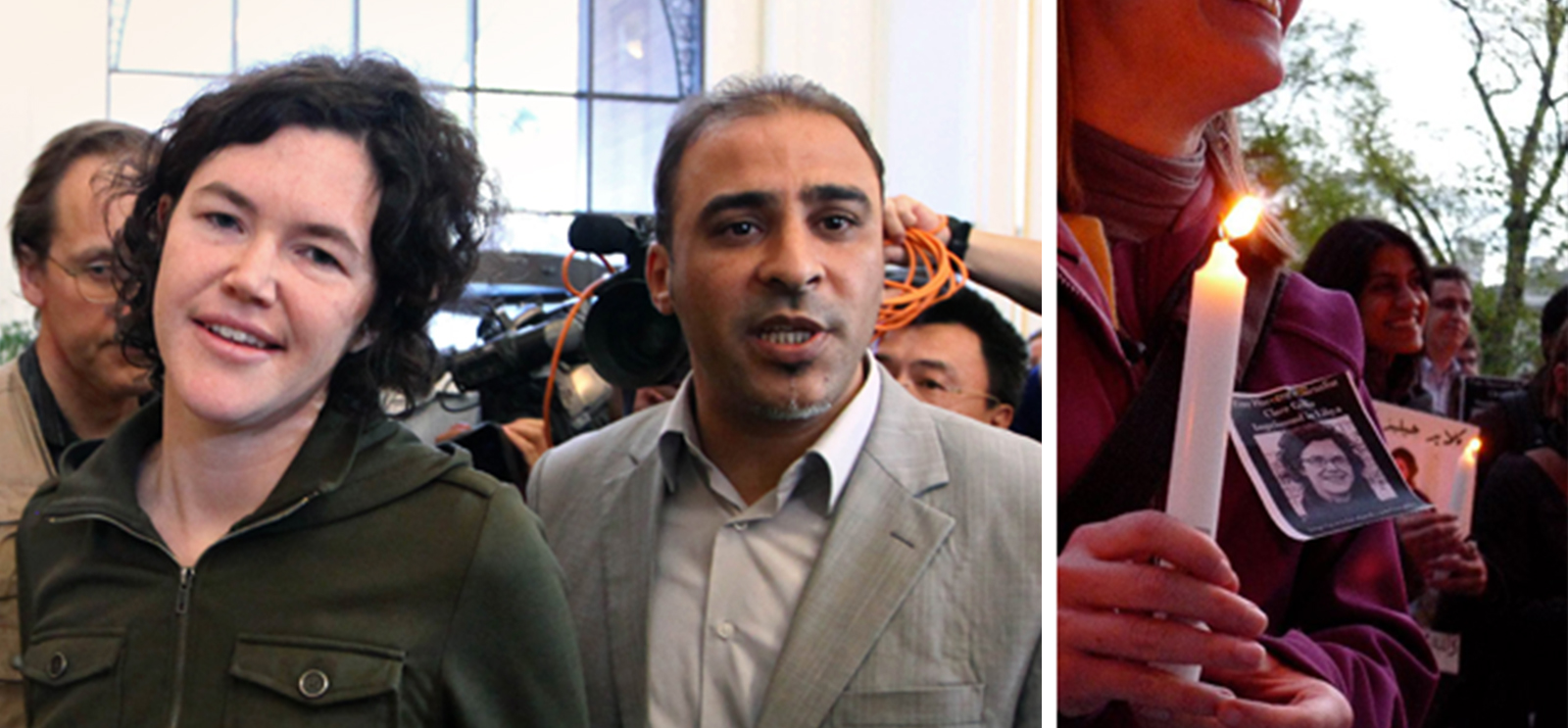
While on assignment in Libya this past April, reporter Clare Gillis, AB’98, heard that Gadhafi soldiers were closing in at 300 meters. Had she and her fellow journalists moved in another direction, even just 100 meters, they would have been fine.
Instead, within minutes they were under fire. Along with two other reporters, Gillis was taken prisoner and spent the next six weeks in captivity. A photogapher with them, South African Anton Hammerl, was shot and killed.
For Gillis, reporting from Libya just a few months after earning a Harvard PhD in medieval studies, the move from academe to war zone was a natural progression. Studying the Middle Ages led to an interest in Islamic culture, she says, and taught her about the historical issues that underlie conflicts like those in the Middle East.
Gillis brings to journalism a scholar’s long view of how events unfold and beliefs evolve. Ideas like democracy and human rights emerge over centuries, she says. “It took the West 1,000 years to make good on any of those promises.” In many other places, “people don’t have any concept that these things exist.”
Before she got her PhD, Gillis had doubts about plunging straight into academia, which she thought might limit her freedom to explore. Journalism seemed like a good alternative. Reporters and historians both evaluate sources and their biases, Gillis says, and both fields require clear writing and carefully shaped conclusions based on evidence.
In November 2010, Gillis—who studied some Arabic during graduate school—traveled to the West Bank and filed several stories for the local Palestine News Network. After coming home for Christmas, she was plannning to return to the West Bank when demonstrations in Tunisia ousted the country’s president. Gillis thought maybe she’d go there. But in January, when massive antigovernment demonstrations broke out in Cairo, she changed her mind. “I said, ‘Forget Tunisia, I’m going to Egypt.’” She bought her plane ticket on January 25, the “day of rage,” when government forces clashed violently with protesters.
Arriving in Cairo with no contacts but with a working knowledge of Arabic, Gillis witnessed the “totally unpredictable, totally spontaneous” revolution. “It was amazing to be able to see that up close and hear people tell their stories,” she says. She cowrote an article for the Boston Globe and posted her photographs and reports to a blog she called Here on the Ground.
Then in mid-February the Libyan revolution erupted, and the borders along its Egyptian side opened. Gillis arranged a ride from Cairo with a medical-aid convoy. Libya, she says, “occupies a completely imaginary space in the minds of non-Libyans, because nobody goes there.” In this “no man’s land,” the rebels, she recalls, were “marvelously friendly” and frequently offered to drive her and other reporters to the front lines, training camps, or hospitals, and to serve as translators.
One morning over breakfast Gillis chatted with a USA Today staff writer who was being pulled back to Cairo. He said his editor needed somebody to “babysit” the story in Libya. She took the opportunity. A week later, in late March, Gadhafi’s forces attacked protesters in the city of Benghazi. “OK, it’s not babysitting the story anymore,”Gillis told herself.
Her dispatches appeared in USA Today and the Atlantic. Early on, Gillis mostly hung out in Benghazi, where generally, despite the “ubiquitous teenagers with Kalashnikovs,” there was no physical danger. Later she ventured out to the front lines, where she got “some insight into what was going on in Libya,” she says, unvailable inside the city. She met engineers, blacksmiths, and career army captains in the special forces, who fought side by side. Many had lost loved ones, some in the 1996 massacre at Tripoli’s Abu Salim prison in which 1,200 prisoners were killed, others as recently as February 20 at the Benghazi Katiba, a massive military garrison, when the rebels overwhelmed it. That battle was a turning point in the uprising.
When Gillis saw the Katiba five days after it fell, it had become a “burnt-out hulk that people go and visit and scrawl graffiti and loot stuff.”
Gillis’s ordeal as a prisoner of the Gadhafi regime began April 5, as she and the three other journalists walked along a road outside the town of Brega. Afterward she told USA Today that trucks came racing toward them, firing shots. Hammerl was hit in the abdomen and left for dead; the others were tied up and thrown into the back of a truck. Then for the next 44 days, they were interrogated often and moved from one location to another in Tripoli. Gillis was alternatively anxious, angry, and bored. A judge sentenced the reporters to prison for entering the country illegally and reporting without permission. On May 17 those one-year sentences were suspended. Gillis and the others were released the next day.
She says she “definitely” plans to go back to the Middle East. “It will just depend what’s going on where.” Gillis still sees journalism and historical research as closely related: two different ways of approaching “the same problems of human existence.”
